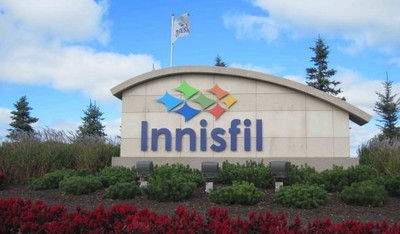THE HISTORY OF INNISFIL, ONTARIO
- Mayssoun Hatoum
- Apr 28, 2021
- 2 min read

The history of Innisfil spans a period in excess of 170 years. The Town was hewn from almost unbroken virgin forests which had been home to the Hurons and were first surveyed in 1820. The area encompassed 68,653 acres (278 km²), including the villages of Allandale, Tollendal, Painswick, Minets Point, and Holly at the time.
The first settlers were the Hewson & Soules families who came by way of the East Holland River and Lake Simcoe to settle at Point Endeavour that they then renamed Hewson's Point (later named Big Bay Point). The Hewson’s settled on March 30, 1820, and the Soules’ in 1822. The Warnica family settled the following year, in 1823, in the area now known as Painswick. The first sawmill in the Township was built at Tollendal by George McMullen in 1829.
John and George Warnica completed the clearing of the bush between Barrie and Churchill and assisted John Clayton to complete his contract between Churchill and Bradford. This opened the land route, known as Penetanguishene Road, which later became Highway 11 and is now Yonge Street. This route between York (now Toronto) and Barrie was completed in the fall of 1825.

Along this road, the settlers came and spread out along the concession lines to clear the lands and develop their farms. There had been those who came ahead by way of the river and the lake; many settled near the shores of Lake Simcoe and Kempenfelt Bay. The only channels of communication were the public roads, and these were scant and poor.
The pioneer farms cut from the forest were mostly self-sustaining. What few products there were for sale found a market in nearby Barrie, which was then little more than a village. Distant York was reached in the winter when the ice and snow made for better roads.

During this period, post offices, churches, and stores were established, also a form of local government performed by commissioners was appointed under a provincial act. The first post office, then called Innisfil, was located at what is now called Barclay's Corners. The first school was built in 1838 and located at Myers Corners, later called Victoria (now the community of Stroud). The first church was also at Victoria and was of Methodist denomination.
Milling in Innisfil was first done at Tollendal in 1835. The need for a grist mill to grind wheat is an indication of the progress toward an agricultural community.
On January 1, 1991, by virtue of the South Simcoe Act, the Township of Innisfil, a northern section of the Township of West Gwillimbury, and the Village of Cookstown, were amalgamated and incorporated as the Town of Innisfil.
In 1993, the Ontario Stockyards livestock facility, located for a long time in The Junction / West Toronto area in Toronto, relocated just east of the Cookstown townsite, on Highway 89.
As of 2006, Innisfil had a total permanent population of 31,175 and an estimated seasonal population of 4,000 people. Having begun as a community of seasonal homes for people living in Toronto, it is now a popular place for permanent residents, mostly families and empty-nesters and, indeed, most of the "cottages" along the lakeshore have since been converted into year-round homes.







Comments